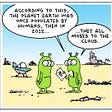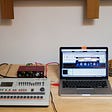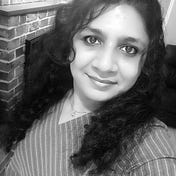What is Quantum Computing?
There has been a lot of buzz around quantum computing lately and for a good reason. The potential and opportunities presented by quantum computers are massive and the concept is worth understanding because if we crack the process of making a business-worthy quantum computer (which we will very likely do soon), we will usher in a new era in technology.
Before we understand quantum computing, it is worthwhile to learn about quantum mechanics as it forms the foundation of this new age technology.
What is Quantum Mechanics?
There is a lot of information on this topic on the internet but most of it is complex. So let me make it simple for you. The word ‘Quantum’ is a Latin word and in urban context it means ‘smallest possible unit in the physical world’. Therefore, quantum mechanics is the study of smallest possible units of matter and energy i.e. atomic and subatomic particles.
How is Quantum Mechanics different?
Quantum Mechanics is an interesting subject of study for 3 reasons (the ones we did not study in classical Physics in school):
- Observation problem:
What if I tell you that you are what you are because I am looking at you.
You might say that I have lost my mind, right?
Well, quantum mechanics has proved this at subatomic level.
Observation problem says that (for example) an electron, which is otherwise a wave function, collapses into being a particle only when it is observed.
In scientific terms, this is called a wave-particle duality.
What is it really? A wave or a particle? I guess, both! That’s the duality.
2. Superposition
Superposition is an extension of wave-particle duality. It means that a particle can exist in more than one position at the same time. It happens because at subatomic level, particles behave like waves (unless observed). Just like multiple waves can overlap to form one new wave, quantum particles can exist on multiple overlapping waves.
Have you heard of the multiverse? Doesn’t sound like fiction anymore, does it? It’s pure science now!
3. Quantum tunneling:
Simply put, it means that a particle has a possibility of passing through a potential barrier. The thinner the barrier is, the better the possibility of passing through.
An electron (or a subatomic particle) can penetrate through barriers as if they are tunneling through.
I wish I could walk through walls too!
Now that some of the concepts of quantum mechanics are clear, let’s dive into quantum computing.
What is quantum computing?
Let me give you one clear difference between classical computing and quantum computing right away -
In classical computing, all processing happens through “bits” which can have either a state 0 or state 1.
In quantum computing, all processing happens through “qubits” which can have a state 0 and state 1 at the same time.
There are 3 important concepts to be understood to understand the world of quantum computing:
- Superposition:
Deriving from the concept of superposition explained above, qubits can represent multiple combinations of 0 and 1 at the same time. Due to this ability of being in more than one state, we can perform multiple computations simultaneously.
The best analogy to explain this concept is the phases of the moon. A moon can be a new moon (0) or full moon (1) or anything in between (phases of 0 and 1).
2. Entanglement:
When qubits are entangled (tied together), the influence of one affects the other and vice-versa. The result of this entanglement is a consequence of the state of all qubits entangled together.
If the state of one qubit changes the output of the entire set of entanglement changes.
3. Interference:
When two opposing waves come together, they cancel each other out. When two similar waves come together they amplify (double) in strength. This is called interference.
In the case of qubits, interference is used to determine the probability of the state of the qubit. You can bias the state of the qubit towards a desired state through right interference.
How do quantum computers work?
Well, just like classical computers, quantum computers also have gates, circuits and processors. But all of these are of a very different make. These machines are kept in very very cold environments, are made of superconductors and use microwave signals for processing.
As of now, quantum computers work alongside classical computers. The algorithms are written in classical programming language, processed in quantum computers and the result is given back to classical computers.
For more information on using quantum computers, I highly recommend: Qiskit.
What’s next?
Quantum computing is evolving at a rapid rate and there are a lot of companies to watch out for. The Internet is abuzz with the latest and it is worthwhile to keep a tab on fresh news from the quantum world.
For updates on Quantum Science, check out my website: thequantumhive.com




